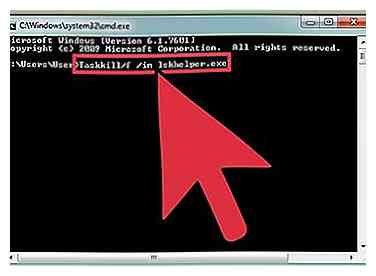Ghostnet Mac OS
Security researchers have confirmed that MacBook webcams can spy on their users without the warning light being activated.
Ghostnet Gmbh IP Addresses as of April 29, 2020, 12:30 pm GMT. Next update in 11 hours, 10 min. The 53-page report, released on Sunday. Describes a network which researchers have called GhostNet, which primarily uses a malicious software program called gh0st RAT (Remote Access Tool) to. Support Communities / Mac OS & System Software / macOS High Sierra Looks like no one’s replied in a while. To start the conversation again, simply ask a new question. Symantec security products include an extensive database of attack signatures. An attack signature is a unique arrangement of information that can be used to identify an attacker's attempt to exploit a known operating system or application vulnerability.
Apple computers have a “hardware interlock” between the camera and the light that is supposed to ensure the camera can't be activated without alerting the user by lighting a tell-tale LED above the screen.
However Stephen Checkoway, a computer science professor at Johns Hopkins University and graduate student Matthew Brocker were able to circumvent this security feature by reprogramming the micro-controller chip inside the camera.
Normally, any program running on a MacBook’s central processing unit that takes images through Apple's iSight camera would turn on the tell-tale light. Brocker and Checkoway's reprogramming tactic allows the camera and it light to be activated independently, so that the camera can be running while the light is switched off.
The researchers have released proof-of-concept software to demonstrate the trick, including a paper , entitled iSeeYou: Disabling the MacBook Webcam Indicator LED. The study provides the first public confirmation that a sophisticated hacker tactic long suspected to be part of the playbook of intelligence agencies, feds and others is not only possible but relatively straightforward.
The same technique that allows us to disable the LED, namely reprogramming the firmware that runs on the iSight, enables a virtual machine escape whereby malware running inside a virtual machine reprograms the camera to act as a USB Human Interface Device (HID) keyboard which executes code in the host operating system. We build two proofs-of-concept: (1) an OS X application, iSeeYou, which demonstrates capturing video with the LED disabled; and (2) a virtual machine escape that launches Terminal.app and runs shell commands. To defend against these and related threats, we build an OS X kernel extension, iSightDefender, which prohibits the modification of the iSight’s firmware from user space.

The research focused on MacBook and iMac computers released before 2008 (iMac G5 and early Intel-based iMacs, MacBooks, and MacBook Pros) but other security researchers reckon the same tactics would work on more recent models from multiple vendors, not just Apple. This means that any laptop with a built-in camera could be used by a skilled hacker to spy on its users without giving the game away. It's unclear whether or not Apple or other manufacturers are developing any mitigation plans.
Attacks on micro-controllers, particularly on Mac machines, are becoming an increasingly fruitful area of security research. For example, security researcher Charlie Miller demonstrated a hack on systems that control Apple batteries, causing the battery to discharge rapidly and potentially leading to explosive consequences. Other attacks target Apple's keyboard controllers.
The spying on people without turning on warning lights issue is far from an academic concern. A tell-tale flickering light was central feature of a notorious case involving school-supplied laptops in Pennsylvania back in 2008.
Administrators at Lower Merion High School near Philadelphia reportedly captured 56,000 images of students by using a trojan installed on school-issued laptops. 'Students reported seeing a ‘creepy’ green flicker that indicated that the camera was in use. That helped to alert students to the issue, eventually leading to a lawsuit,' the Washington Post reported.
More sophisticated hackers have developed the apparent ability to suppress any warning light. This may be a feature of commercial spyware packages, such as FinSpy from FinFisher, which marketing documents covertly leaked through WikiLeaks claim can be “covertly deployed on target systems” to allow “live surveillance through webcam and microphone.”
A surveillance program called Ghostnet, reckoned to be a Chinese spying operation against prominent Tibetans including the Dalai Lama, involved “web cameras [which are] silently triggered, and audio inputs surreptitiously activated,” according to a 2009 report into the snooping by the University of Toronto.
Marcus Thomas, a former assistant director of the FBI’s Operational Technology Division, recently told the Washington Post that the FBI has long been able to covertly activate a computer’s camera, without triggering any 'recording in progress' warning light.
Privacy conscious users have one ready means to protect themselves from spying. “The safest thing to do is to put a piece of tape on your camera,” Miller told the Washington Post. ®

Camnote
A video demonstrating how the iSight camera can be turned on without activating the small-green LED light on older Macs can be found here.
About the App
- App name: ghostscript
- App description: Interpreter for PostScript and PDF
- App website: http://www.ghostscript.com/
Install the App
Ghostnet Mac Os X
- Press
Command+Spaceand type Terminal and press enter/return key. - Run in Terminal app:
ruby -e '$(curl -fsSL https://raw.githubusercontent.com/Homebrew/install/master/install)' < /dev/null 2> /dev/null
and press enter/return key.
If the screen prompts you to enter a password, please enter your Mac's user password to continue. When you type the password, it won't be displayed on screen, but the system would accept it. So just type your password and press ENTER/RETURN key. Then wait for the command to finish. - Run:
brew install ghostscript
Done! You can now use ghostscript.